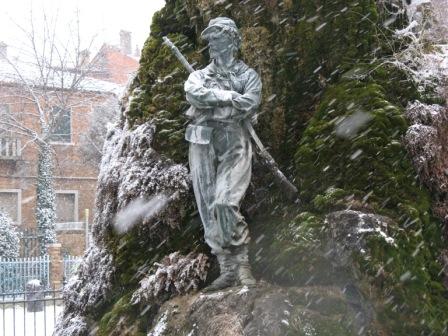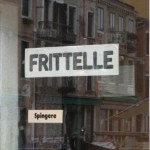
As if we needed any excuse — or permission — to gorge on food loaded with fat and sugar, today it’s take no prisoners. I haven’t found any special dispensation that promises that the fat and sugar consumed today will do less, or no, damage as they make themselves comfortable in their new home on your hips and in your arteries. But we can pretend. It’s Carnival, after all. No rules.
So the short version of today’s amusement can be summed up as: Fritole and galani. Venetians say that “El Zioba Grasso tute le boche lica” (“On Fat Thursday everybody licks their mouth”). More broadly translated: gorge, scarf, devour. Or my new favorite, “englut.” Makes me feel slightly sick without having eaten anything.
But even eating ten kilos of fritole and galani can’t match the excitement that was reserved for today back in the Olden Days.
The Venetian Republic made a fetish of commemorating important events in its life — every single victory, it would appear, and even some defeats. It all worked to keep Venetians united in their Venetian-ness and reinforce how very special, important, and amazing that was. And naturally any people who regard themselves and their city/nation/world in that light is bound to enjoy really laying it on when recalling certain events.

So the Patriarch of Aquileia, after a decisive battle in 1162, was taken prisoner and carried off to Venice along with his 12 canons. They offered an unusual ransom for their freedom: A bull and 12 fat pigs, which they promised would be provided every Fat Thursday for 200 years. And so it was.

In the early days of this entertainment, the bull was killed by the doge, and the pigs by the senators. (No comments, please.) Eventually Andrea Gritti (doge from 1523 to 1538), he of the palace which has become famous as a luxury hotel, decreed that the pigs be killed by members of the Butchers’ guild, while the bull would be dispatched by “the most robust member of the Ironworkers’ guild” with a single blow of a massive sword, a titanic decapitation in which the sword wasn’t allowed to touch the ground.
Even today, a common Venetian way of saying “Let’s get to the point” is “Tagliamo la testa al toro” — let’s cut the head off the bull. I hazard that “cut the bull” might be an Anglo-Saxon relative of the phrase and its meaning, but let’s move on.
So what did the doge and Senators do while the gore was flowing? They took clubs in hand and attacked 12 towers and a church made of marzipan, which they bludgeoned to smithereens.
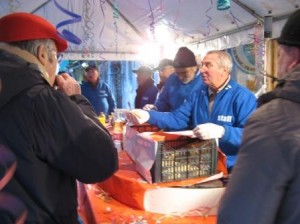
When we walked out the front door at 4:45, the voluptuous perfume of just-fried fritole suffused our little street. Looking around, we discovered that they were being turned out in the taverna two steps away. A taverna here isn’t anything like in Greece; here the word connotes somebody’s (usually a guy, often old) haven that’s something like a cross between a garage and a rec room, usually with some kind of primitive kitchen set-up. Evidently one of the caulkers was frying up a fresh batch for the refreshment table.

What I really want to know, though, is where the leftovers ended up. I want to go there and help dispose of them as nature intended.

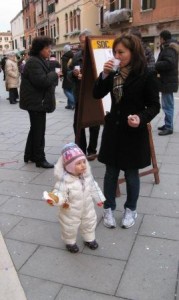

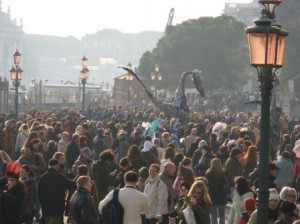

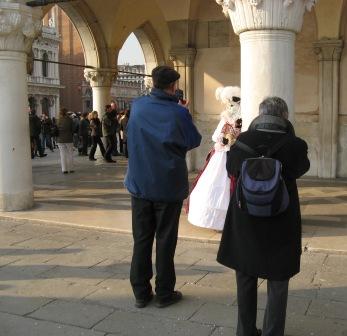


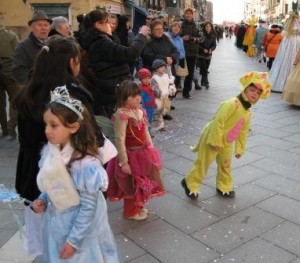
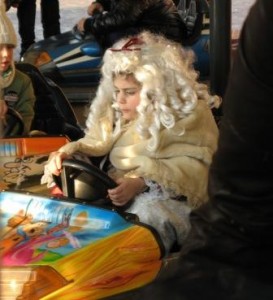
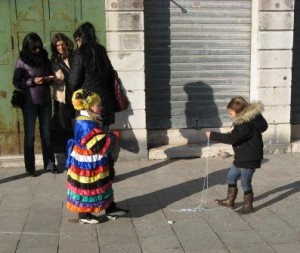
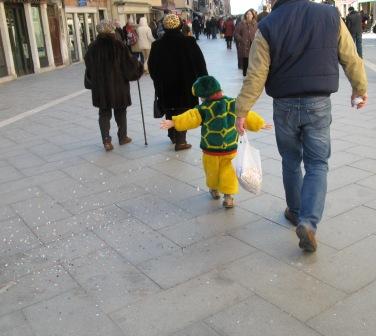
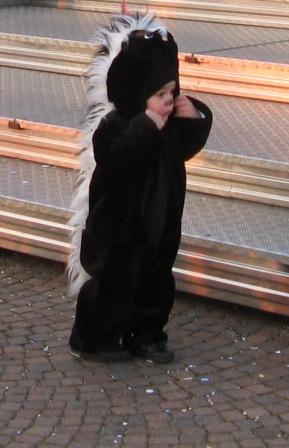
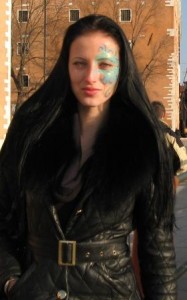
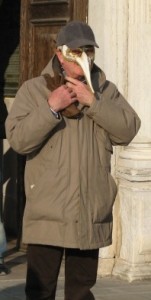
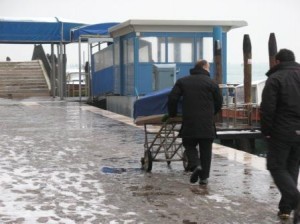 Two men emerged from the hospital through an unidentified door and began walking down the fondamenta with us. Somebody was with them. Somebody who was going — in fact, had already gone — in a radically different direction.
Two men emerged from the hospital through an unidentified door and began walking down the fondamenta with us. Somebody was with them. Somebody who was going — in fact, had already gone — in a radically different direction.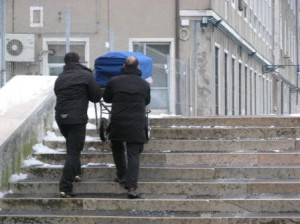



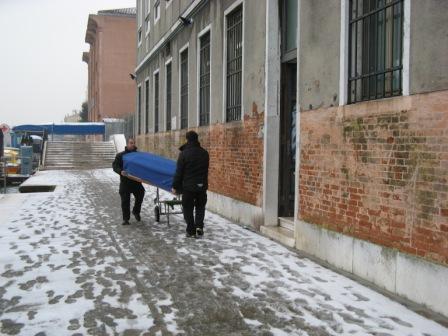
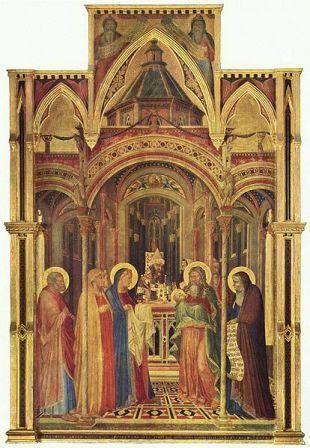

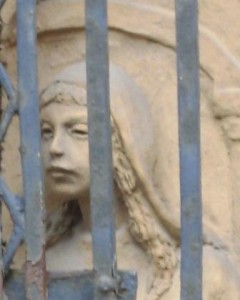
 Lest you think that this effusion represents the apex of Victorian nostalgia — the anonymous donor clearly beat Mussolini to the public declaration of worship of their Latin forebears — let me note that a statue of Cerere also stands atop the Chicago Board of Trade, as well as appearing on the Great Seal of the State of New Jersey, holding a cornucopia. These notions die hard. Or not at all.
Lest you think that this effusion represents the apex of Victorian nostalgia — the anonymous donor clearly beat Mussolini to the public declaration of worship of their Latin forebears — let me note that a statue of Cerere also stands atop the Chicago Board of Trade, as well as appearing on the Great Seal of the State of New Jersey, holding a cornucopia. These notions die hard. Or not at all.